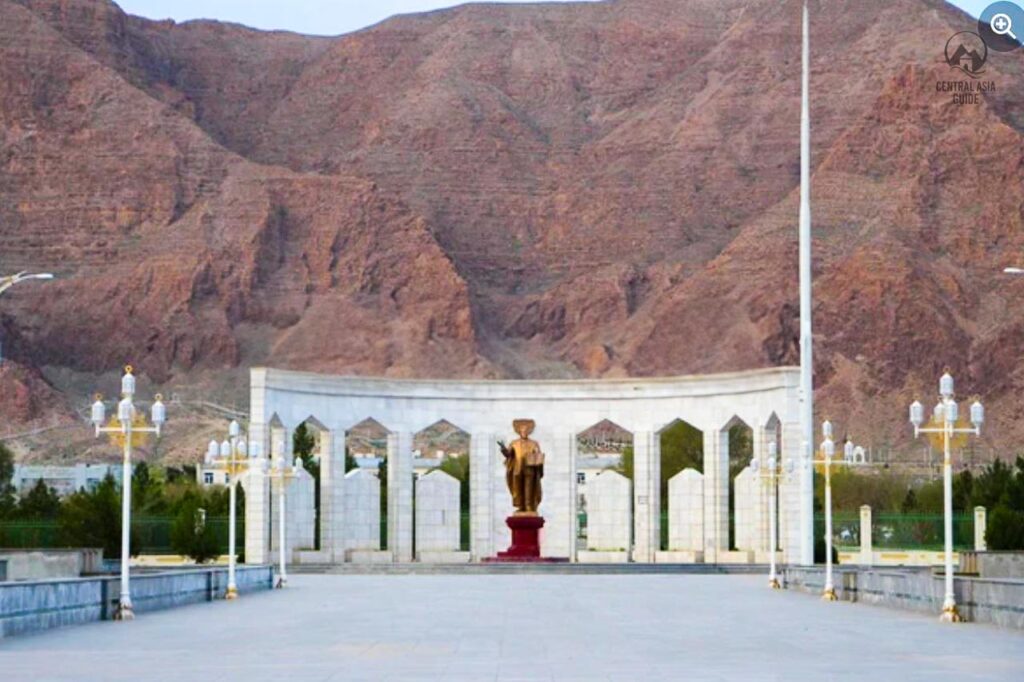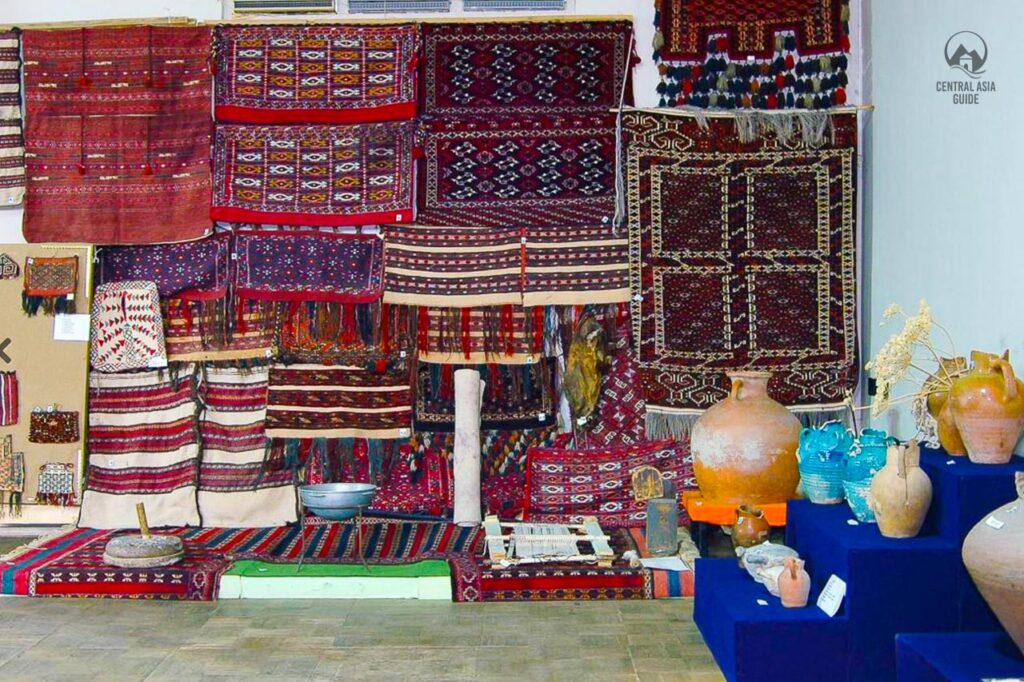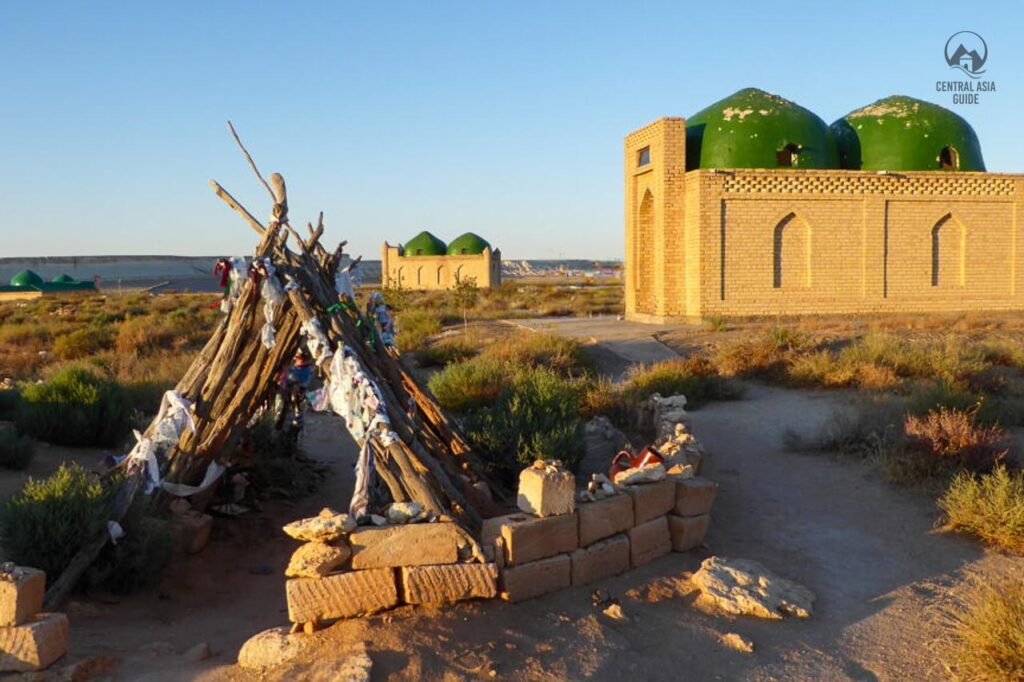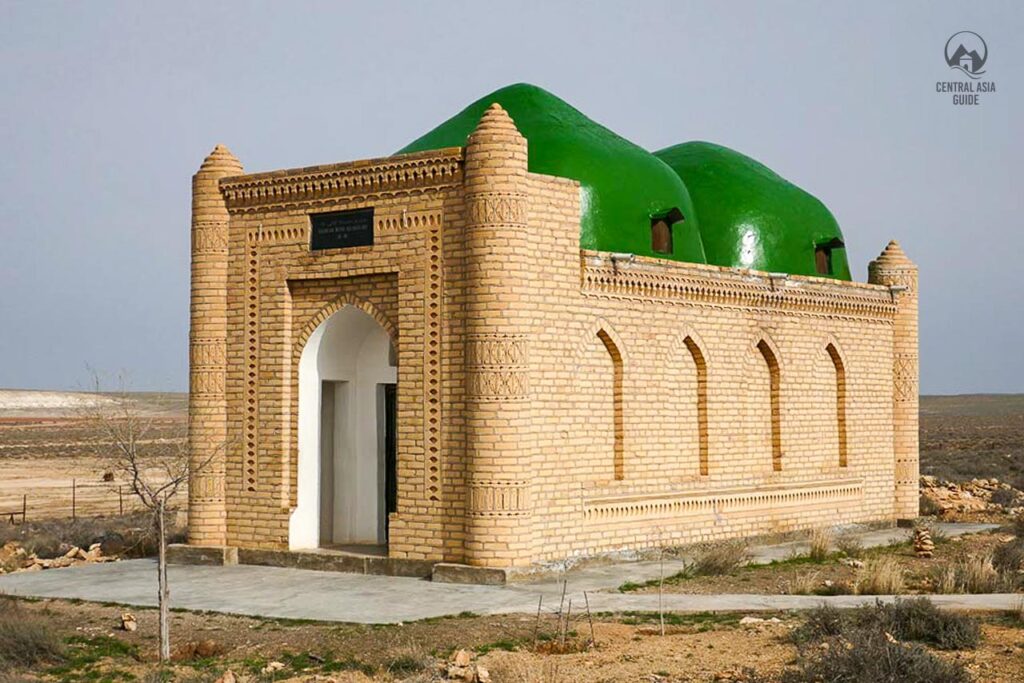Balkanabat
Balkanabat
Balkanabat is the capital of the Balkan Region in the most Western Turkmenistan by the Caspian Sea and holds a population of about 110 000 people, situated at the foot of the steep-sided arid massif known as Big Balkan. Until 1999 the town was named Nebitdag (“Oil Mountain”) and it is to the oil industry that Balkanabat owes its foundation and development. The oil in the region was discovered in 1874 and a small refinery was built, bores were drilled in the following decade, but the area was eclipsed by the rapid development of the oilfields of Baku, and the refinery got bankrupt. It was not until the 1930s that commercial oil production from the Nebitdag area started again. Today no oil remains in the town itself, though it’s still a small center for the oil industry, as reserves nearby have not yet gotten exhausted.
Balkanabat is the perfect stopover for exploring the Western Turkmenistan and Balkan Region rather than a city itself. The city is a starting point for trips to Dekhistan ruins and Yangykala Canyon.


Balkanabat Sights
Balkanabat is set out in a grid pattern, with Soviet-era apartment blocks dominating the western side of town and Turkmen homes forming the eastern suburbs. Magtymguly street is one of the main streets running east-west and parallel to the railway. At its center lies a Niyazov Square, observed by a lonely statue of the former president.
Balkanabat Regional History Museum
Regional History Museum lies in the Gurtgeldi Annayew street, containing ethnography, archaeology and wildlife exhibits of the Balkan region including a display of local carpets. You can check out the anchor designs and symbols of the Caspian dwelling Yomut Turkmen. The museum is located opposite to the Cultural Palace of Oil Workers. There is also a room dedicated to the achievements of post-independence Turkmenistan, including photographs of President Niyazov’s visits to Balkanabat.
A hall to the left contains a mix of ethnography, archaeology and ecology. The former section includes a display focused around a segment of the yurt, displays of jewelry worn by ladies and horses, a selection of carpets and assorted agricultural and domestic implements. There is a small display devoted to the early oil industry when the precious liquid was extracted from shallow deposits just as water from a well and then transported in barrels loaded onto camels. The underwhelming archaeology section manages a few pots and a couple of models of the sights around Dekhistan.


Balkanabat Carpet Factory Museum
Northeast from the historical museum, along Azady street, you can reach the Balkanabat Carpet Factory that has a small museum. Some of the products of the factory are displayed inside, including entries to past competitions of carpet design. There is a set of decorations for a camel, a carpet design named Unity, combining the “Guls “characteristic of different Turkmen tribes and one called Peace to the World, whose “guls” incorporate numerous doves.
Balkanabat Caravan Monument
Caravan Monument is known as Monument to the Builders of Nebit Dar and Monument of Pioneers. It stands on the west side of the city at the roadside in Balkanabat, dedicated to crossing the desert. It is one of the most attractive statues in Turkmenistan, a monument to the desert explorers who first identified the oil wealth of the area. The camel strains forward amidst a fierce sandstorm, the men around it shielding their eyes from the harsh sand-laden wind.
Golden Monument of Niyazov
Walking immediately west from Caravan Monument you will face a golden statue of President Niyazov standing atop a tribune on Magtymguly street, looking out across a the pedestrianized central square.
Saparmurat Turkmenbashi Park
Saparmurat Turkmenbashy Park is a large open space with few pieces of independence-era statuary among rows of saplings. A tall marble obelisk in the center of the park is part of a monument that also includes mosaic panels depicting scenes from Turkmen’s life: Baking bread in the tandyr (a cylindrical clay or metal oven used in cooking and baking) scything wheat, and playing the dutar.
The central panel is a portrait of President Niyazov. To the east of this monument is a statue of the president, seated in a comfy armchair in front of a semicircular arcade. Immediately to the north of this somewhat sterile park is a cluster of three-and four-storey apartment blocks of the Soviet period, with murals on their end walls devoted to the 1980 Moscow Olympics. Some of these feature the adorable bear mascot of those games.
Sights Around Balkanabat
Gozli Ata Mausoleum
Gozli Ata was reportedly a respected Sufi who lived in the early part of the 14th century. He had a large following until his untimely death at the hands of Mongol invaders. His mausoleum lies in a natural depression of rocky desert, is now a popular place of pilgrimage located 135 km north of Balkanabat. To get there you need an experienced driver who can find it. It rests in the center of a natural basin, surrounded by mountains of bands of pink and white rock.
His mausoleum is a brick building with twin white domes, standing in an old graveyard containing many nicely carved stone tombs. The twin-domed building of the mausoleum is needed to accommodate the length of the tomb: a triangular prism perhaps three ordinary graves long. Gozli Ata’s wife is buried in an adjoining mausoleum and according to custom, visitors must first pray at her last resting place. A cemetery has sprung up nearby where gravestones contain a notch in the top where water can be collected to ‘feed’ the soul of the deceased.


Tarshavat Caravanserai
Tarshavat Caravanserai lies 38 km from Balkanabat. The scenic ruins of the Tarshavat caravanserai have survived on one of the medieval caravan route of the Silk Road. The caravanserai has a rectangular structure with a stone wall and ruins in the inner part of residential buildings.
Travel to Balkanabat
Plane
There are currently only few flights a week between Balkanabat and Ashgabat, on Tuesdays, Thursdays and Saturdays. The flight time is one hour. The airport is 2 km east from Balkanabat, along the Ashgabat road. There is a Turkmenistan Airlines booking office in the railway station which is open during weekdays.
Train
The railway station is a plain brown block that lies on the southern edge of Balkanabat. Its main hall is vivified by mosaics depicting oil workers in action. There are two trains daily to Ashgabat (7 hours), and two trains to Turkmenbashy (3 hours), although to the latter one, both trains currently depart in the early hours of the morning.
Bus / Taxi
The bus station is located just in front of the railway station. A daily public bus operates the trip to Ashgabat in six and a half hours. Private taxis gather around the back of the bus station, enthusiastic to take you to Ashgabat, Turkmenbashy, or Hazar. A taxi to Ashgabat takes around four and a half hours.
Destinations near Balkanabat
Page updated 30.10.2024